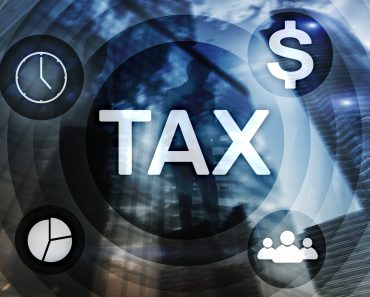
The OAS Clawback 2023 is a tax in Canada that affects retirement income. It requires seniors to repay a portion or all of their OAS benefits if their annual income exceeds a certain threshold. Calculated during tax filing, a recovery tax is withheld as an advance on income tax. Strategies can be utilized to minimize the clawback, such as splitting pensions, withdrawing from TFSA, or selling assets early. It is important to understand how this clawback is calculated and the impact on taxable income. Stay informed about OAS Clawback and taxes in Canada.
Understanding the OAS Clawback Tax
The OAS Clawback Tax in Canada is an important aspect of retirement income planning. It is essential to comprehend how this tax works to make informed financial decisions. Here are key points to understand:
- The OAS Clawback Tax is triggered when a senior’s annual income exceeds a specific threshold.
- It is crucial to calculate your taxable income accurately, including various sources of income like pensions, self-employment earnings, and investment returns.
- The OAS Clawback Tax is based on the difference between your income and the threshold. You are required to pay 15% of that amount as part of the tax.
- When filing your tax return, ensure you report your OAS payments accurately to avoid any penalties or complications.
Understanding how the OAS Clawback Tax operates allows you to plan effectively to minimize its impact. By employing strategies such as income splitting, utilizing tax-free savings accounts (TFSAs), selling capital assets strategically, and maximizing available tax thresholds, you can reduce the clawback amount.
Stay informed about the latest changes and guidelines regarding the OAS Clawback Tax in Canada to ensure your retirement income planning aligns with your financial goals.
How the OAS Clawback is Calculated
The calculation of the OAS Clawback amount is based on the difference between your income and the established threshold. The clawback is applied to the excess income above this threshold, and the tax owed is 15% of that amount.
To calculate your OAS Clawback, you need to gather all your income information for the year, including employment income, investment income, and any other sources of taxable income. Subtract any applicable deductions or credits, such as pension deductions or RRSP contributions.
Once you have determined your total income, compare it to the OAS Clawback threshold for the tax year. If your income exceeds the threshold, the excess amount will be subject to the clawback tax rate. Keep in mind that the OAS Clawback threshold is adjusted annually based on federal tax rates and personal tax credits.
It’s important to note that the calculation of the OAS Clawback is done during the tax filing process. The amount of clawback will be reflected on your Notice of Assessment from the Canada Revenue Agency (CRA).
By understanding how the OAS Clawback is calculated, you can better plan your finances and take advantage of strategies to minimize its impact on your retirement income.
Determining Your Taxable Income for the OAS Clawback
When it comes to the OAS clawback, understanding how your taxable income is determined is crucial. Your taxable income will include various sources, and each source must be considered to accurately assess your eligibility for the OAS clawback. Here are some key factors to consider:
- Employment Income: This includes income from employment, such as wages, bonuses, or tips.
- Investment Income: This covers income generated from investments, such as dividends, interest, or capital gains.
- Pension Income: This includes income from eligible pension plans or registered retirement income funds (RRIFs).
- Government Benefits: Income from government benefits like CPP, EI, or social assistance will be taken into account.
- Rental Income: If you earn income from rental properties or real estate investments, it will be considered as well.
- Other Income: Any other sources of income, such as self-employment earnings or alimony, must also be reported.
By adding up the income from these different sources, you can determine your total taxable income. This figure will be used to calculate the OAS clawback amount based on the specific threshold set for the year. Understanding what income is included and ensuring accurate reporting is essential to avoid any discrepancies and potential penalties.
Reporting OAS Payments on Your Tax Return
When filing your tax return in Canada, it is important to accurately report any OAS payments you have received. Here are the key steps to follow:
- Gather your OAS payment information: Ensure that you have all the necessary documents related to your OAS payments, including your T4A(OAS) slip.
- Enter the OAS amounts: On your tax return, locate the specific section for reporting OAS income. Fill in the appropriate fields with the total amount of OAS payments you received during the tax year.
It is crucial to report your OAS payments correctly to ensure accurate tax calculations and compliance with the Canadian tax laws. Be thorough and double-check your entries to avoid any errors or discrepancies that could lead to potential penalties or audits.
Strategies to Minimize the OAS Clawback
Minimizing the OAS clawback can help you retain more of your retirement income. Here are some effective strategies to consider:
- Delaying OAS Payments: By deferring the start of your OAS payments, you can reduce your taxable income and potentially lower or avoid the clawback altogether.
- Maximizing TFSA Contributions: Contributing to your Tax-Free Savings Account (TFSA) is an excellent way to generate tax-free income. Withdrawals from TFSA accounts are not considered taxable income and can help lower your overall income, minimizing the clawback.
- Implementing Pension Splitting: If you have a spouse or common-law partner, consider splitting eligible pension income to lower your combined taxable income. This can help decrease the impact of the OAS clawback.
- Strategic Asset Sales: Selling large assets before reaching the age of 65 can help reduce your income and minimize the clawback. However, it’s essential to consider potential tax implications before making any significant asset sales.
- Utilizing Charitable Donations: Making charitable donations can provide tax benefits and potentially reduce your taxable income, helping to mitigate the OAS clawback.
Keep in mind that these strategies should be evaluated based on your unique financial situation. Consulting with a financial advisor or tax professional in Canada is recommended to determine the most suitable approach for minimizing the OAS clawback.
Selling Capital Assets and its Impact on OAS Clawback
When it comes to the OAS Clawback 2023, selling capital assets before receiving OAS payments can have a significant impact on the clawback amount. Capital gains from the sale of assets are considered income and can increase the overall taxable income.
To minimize the impact of the clawback, individuals nearing retirement age can consider selling large assets, such as property or investments, before turning 65. By doing so, they can activate capital gains earlier, potentially lowering their taxable income in the years they receive OAS payments.
By strategically planning asset sales, individuals can manage their income levels and potentially reduce the clawback amount. It is important to consult with a financial advisor or tax professional to understand the specific implications and potential tax savings.
Remember that the OAS Clawback is calculated based on the difference between your income and the established threshold, with 15% of that amount being clawed back. Therefore, selling capital assets strategically can help minimize the overall impact of the clawback on your OAS benefits.
Maximizing Tax Savings with Canadian Thresholds
When it comes to the OAS Clawback 2023, understanding the Canadian thresholds is crucial for maximizing tax savings. By staying below these income limits, you can reduce or even avoid the clawback altogether. Here are some key strategies to consider:
- Splitting Income: If you have a spouse or partner, consider splitting your pension income to keep each individual’s income below the clawback threshold.
- Withdraw from TFSA: Instead of withdrawing from taxable accounts, consider using funds from your Tax-Free Savings Account (TFSA) to minimize your taxable income.
- Delayed OAS Receipt: Delaying your OAS payments until a later age can help you stay below the clawback threshold, allowing you to maximize your tax savings.
- Selling Assets: Consider selling significant assets before reaching the age of 65, as capital gains from these sales can increase your income and potentially trigger the clawback.
By implementing these strategies, you can take advantage of the Canadian thresholds and minimize the impact of the OAS Clawback 2023 on your overall tax liability. It’s important to consult with a financial advisor or tax professional to determine the best approach based on your individual circumstances.
Important Information on OAS Clawback and Taxes in Canada
When it comes to the OAS Clawback and taxes in Canada, it is essential to understand the impact on your retirement income. The OAS Clawback 2023 is a tax implemented on OAS benefits if your annual income exceeds a certain threshold. It is crucial to be aware of how this clawback is calculated and how it affects your taxable income.
Reporting OAS payments accurately on your tax return is vital to avoid any discrepancies. Knowing how to determine your taxable income for the OAS Clawback is crucial in meeting your tax obligations. By understanding the rules and regulations surrounding this clawback, you can effectively plan your financial strategies and maximize your tax savings.
If you are looking to minimize the OAS Clawback, there are several strategies you can consider. Selling capital assets before reaching the age of 65 can have an impact on the clawback calculations. Familiarize yourself with Canadian thresholds for maximized tax savings.
- Understand the calculation of the OAS Clawback
- Determine your taxable income accurately
- Report OAS payments correctly on your tax return
- Explore strategies to minimize the OAS Clawback
- Take advantage of Canadian thresholds for tax savings
Being well-informed about the OAS Clawback and taxes in Canada is crucial for effective financial planning during retirement. Stay updated with the latest regulations and make informed decisions to optimize your retirement income.






